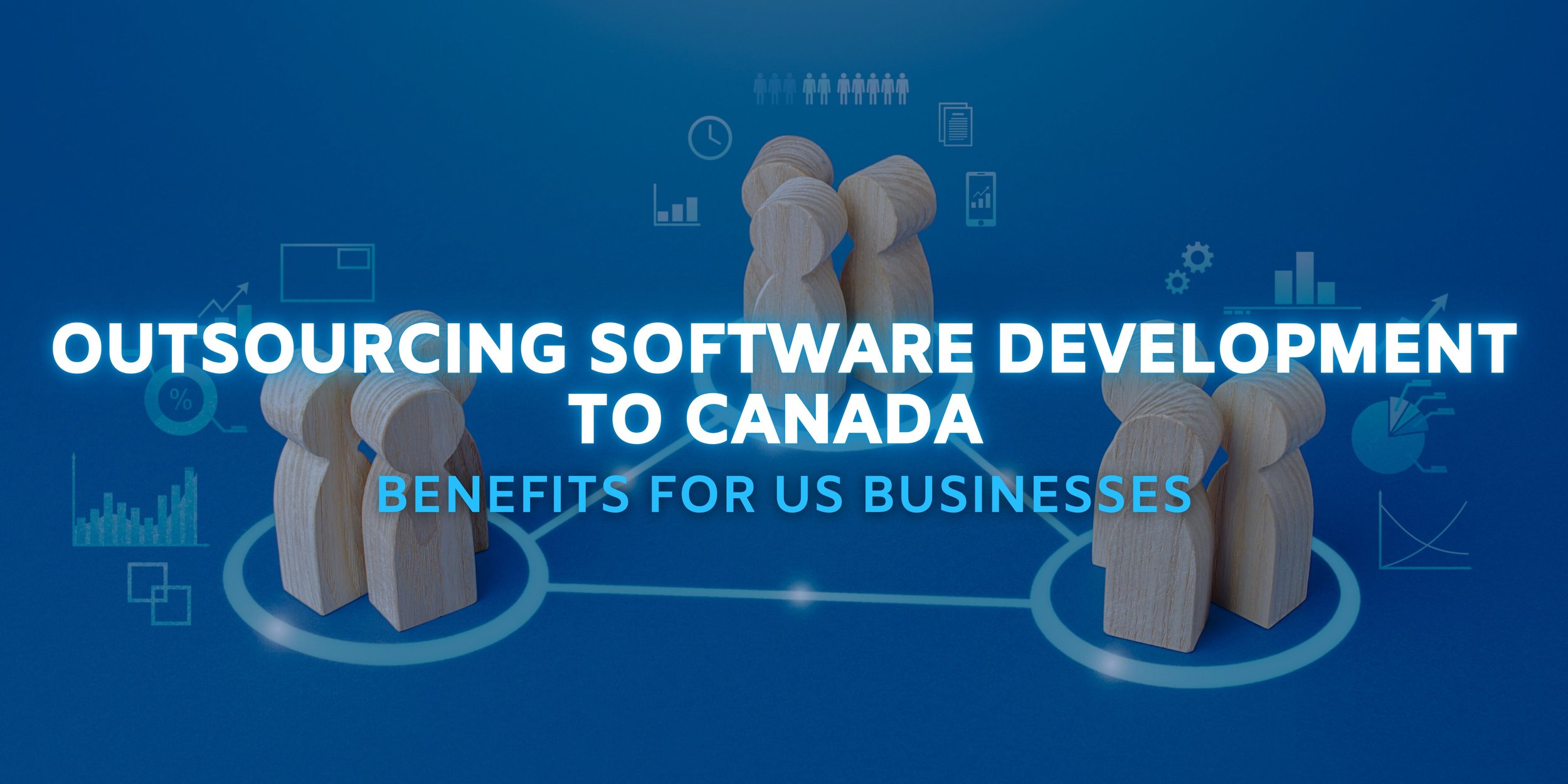Introduction
The pace of technology shows no signs of slowing, and 2025 is set to be a defining year for software development. As businesses strive to stay ahead in a world driven by innovation, the tools, methodologies, and strategies they rely on are transforming rapidly. These changes promise to not only redefine how software is built and deployed but also shape how organizations respond to the growing demands of customers and markets.
In this environment, staying competitive means more than adopting the latest technologies, it requires a proactive approach to understanding and implementing emerging trends. From the integration of artificial intelligence to the rise of low-code platforms, the coming year presents both challenges and opportunities for businesses across industries. Organizations that can anticipate these shifts and adapt their strategies accordingly will position themselves as leaders in this dynamic space.
This blog explores the top software development trends that will shape 2025, offering actionable insights into how businesses can capitalize on these advancements. By staying informed and prepared, companies can harness these trends to drive innovation, improve efficiency, and deliver exceptional results in 2025.
1. AI-Powered Development
Artificial intelligence and machine learning are transforming the landscape of software development by automating routine tasks and improving accuracy across workflows. These technologies are enabling developers to streamline processes, reduce errors, and focus on more impactful aspects of their work. AI-powered tools are becoming integral to development, offering capabilities such as predictive coding assistants that enhance efficiency and provide intelligent suggestions during the coding process.
Innovations like AI-driven bug detection and automated code review tools are significantly improving software quality. These tools can quickly identify vulnerabilities, suggest improvements, and ensure consistency, reducing the time spent on manual reviews. In addition, the rise of AI in cybersecurity has made it possible to detect and address potential threats earlier in the development lifecycle, creating more secure and reliable applications.
Looking ahead, AI is expected to shift the role of developers from executing repetitive tasks to taking on more strategic and creative responsibilities. Developers will be empowered to focus on solving complex problems, exploring innovative solutions, and aligning technology with broader business goals. This evolution not only enhances productivity but also positions AI as a cornerstone in the future of software development.
2. Low-Code and No-Code Platforms
Low-code and no-code platforms are rapidly gaining traction as businesses seek to accelerate software development and innovation. These platforms empower non-technical users to create applications with minimal coding expertise, opening new possibilities for organizations to respond quickly to market demands. By enabling broader participation in the development process, these tools foster a more inclusive and agile approach to innovation.
The impact of this trend is substantial. By 2025, it is projected that 65 percent of application development activity will involve low-code platforms. Businesses are already leveraging these tools to reduce bottlenecks in traditional development pipelines and to bring ideas to life more efficiently. For example, companies are using no-code platforms to prototype and launch applications quickly, streamlining workflows and improving time-to-market for critical projects.
Despite their benefits, low-code and no-code platforms come with limitations. Scalability can be a concern, as some platforms may struggle to handle the demands of larger, more complex applications. Security is another critical consideration, as these platforms often rely on pre-built components that could introduce vulnerabilities if not properly managed. While these challenges exist, businesses that address them strategically can unlock the full potential of low-code and no-code platforms, driving innovation and staying competitive in a fast-changing landscape.
3. Cybersecurity in the Spotlight
Cybersecurity has become a critical focus in software development as digital threats grow increasingly sophisticated. Organizations are facing rising risks from advanced cyberattacks, including AI-driven threats, phishing scams, and vulnerabilities exposed by quantum computing advancements. In this evolving landscape, the importance of a robust cybersecurity strategy cannot be overstated. Businesses that prioritize security as an integral part of their development processes are better equipped to protect sensitive data, maintain trust, and ensure business continuity.
Key practices in modern cybersecurity include integrating DevSecOps throughout the software lifecycle and adopting "shift-left" methodologies that emphasize early threat detection during development. By addressing vulnerabilities at the code level, developers can minimize security risks before they become critical. Additionally, the emergence of quantum computing presents new challenges, making the adoption of quantum-resistant protocols a necessary step for safeguarding systems against future threats.
To stay ahead of evolving risks, organizations must adopt proactive security strategies that extend beyond reactive measures. These strategies include regular vulnerability assessments, automated security testing, and continuous education for development teams. By embedding security into every stage of the development process, businesses can build resilient systems that are prepared to handle the challenges of an increasingly connected and complex digital world.
4. Cloud-Native Development
Cloud-native development is revolutionizing how software is built, deployed, and managed. This approach focuses on creating applications designed specifically for cloud environments, leveraging the scalability, flexibility, and resilience that cloud infrastructure provides. By embracing cloud-native practices, businesses can adapt more quickly to changing demands and deliver consistent performance, even during periods of high usage or unexpected disruptions.
Key technologies driving cloud-native development include microservices architecture, Docker containers, and Kubernetes orchestration. Microservices enable developers to break applications into smaller, independent components that can be developed, deployed, and scaled individually. Docker provides a lightweight platform for containerizing these components, ensuring consistency across different environments. Kubernetes further enhances scalability and resilience by managing containerized applications, optimizing resource use, and enabling rapid updates without downtime.
The adoption of cloud-native development is accelerating, with projections indicating that 95% of new digital workloads will be deployed on cloud-native platforms by 2025. This trend brings significant business benefits, including increased operational efficiency and reduced downtime. By building applications that are inherently scalable and resilient, organizations can improve user experiences, reduce infrastructure costs, and maintain a competitive edge in a technology-driven marketplace.
5. Remote Work and Distributed Teams
Remote and hybrid work have fundamentally changed how software development teams operate, creating new workflows and redefining collaboration. The shift toward distributed teams has been accelerated by the pandemic, but it has since proven to be a sustainable model for many organizations. Remote work allows companies to access a broader talent pool and offer employees greater flexibility, which can improve job satisfaction and retention.
Collaboration tools such as Slack, Zoom, Jira, and cloud-based platforms play a crucial role in maintaining communication and productivity within distributed teams. These tools help bridge the gap created by physical distance, ensuring that team members can stay connected, aligned, and engaged in their work. Organizations that invest in these technologies can streamline workflows and foster a collaborative environment, even when team members are spread across multiple locations.
Looking ahead, companies will need to focus on fostering inclusivity and building strong team cohesion within diverse, distributed workforces. Best practices for managing remote teams include setting clear expectations, maintaining regular communication, and creating opportunities for virtual team bonding. Encouraging a culture of trust and accountability ensures that remote work remains productive and effective. By embracing these strategies, organizations can thrive in the new normal of remote and hybrid work environments.
6. Sustainability in Software Development
Sustainability is becoming a key focus in software development as organizations recognize the environmental impact of their practices. With increasing awareness of climate change and resource consumption, the tech industry is moving toward more responsible and energy-efficient approaches. Sustainability in development not only benefits the planet but also aligns with growing consumer expectations for environmentally conscious businesses.
Green coding practices are at the forefront of this shift, emphasizing energy-efficient coding techniques and the optimization of resource consumption. By designing software that uses fewer computational resources, developers can reduce energy usage and minimize the environmental footprint of their applications. These practices contribute to creating more sustainable systems while maintaining high performance and scalability.
Adopting sustainability in software development brings significant business advantages. Companies that prioritize environmentally friendly practices can enhance their reputation, build stronger customer loyalty, and achieve cost savings by reducing energy expenditures. Partnering with a software development company experienced in sustainability can further amplify these benefits, providing expertise and tools to integrate green practices effectively. This commitment not only supports environmental goals but also drives long-term business success in an increasingly eco-conscious market.
7. User Experience (UX) as a Competitive Advantage
User experience (UX) has become a crucial factor in determining a business’s success in an increasingly competitive market. A strong UX strategy enhances customer engagement and retention by creating intuitive, enjoyable, and accessible digital experiences. Businesses that prioritize UX are better positioned to meet user needs and expectations, fostering loyalty and long-term relationships.
Effective UX strategies rely on tools and techniques such as A/B testing and user analytics to gather insights into user behavior and preferences. Data-driven design allows developers to create applications that align with these insights, ensuring seamless interactions and satisfaction. By adopting a user-centric approach, companies can differentiate themselves in the marketplace and build stronger connections with their audiences.
The impact of UX extends beyond customer satisfaction. Research predicts that by 2025, businesses with robust UX strategies will outperform their competitors by three to five times. Companies that excel in user-centric design have already demonstrated how prioritizing UX leads to higher adoption rates, improved brand reputation, and increased revenue. As the importance of UX continues to grow, organizations that invest in user-focused development will gain a significant competitive edge in their industries.
8. Internet of Things (IoT)
The Internet of Things (IoT) is set to drive significant innovation in software development as the number of connected devices grows to an estimated 75 billion by 2025. This explosive growth presents immense opportunities for developers to create applications that enable seamless communication and functionality across a wide range of devices. From smart homes to industrial automation and healthcare solutions, IoT is opening new possibilities for enhancing convenience, efficiency, and overall quality of life.
However, the rise of IoT also introduces challenges that developers must address. Scalability is a critical concern as applications must handle the increasing volume of devices and the data they generate. Security is equally important, as the interconnected nature of IoT systems makes them vulnerable to cyber threats. Effective data management is another key area, requiring solutions that can process, analyze, and store large datasets while maintaining performance and reliability.
Looking ahead, IoT has the potential to reshape industries by enabling smarter, more connected systems. In industrial automation, IoT can optimize manufacturing processes and supply chain operations. In healthcare, connected devices can provide real-time patient monitoring and improve medical outcomes. As IoT continues to evolve, developers who embrace these opportunities and tackle the associated challenges will play a pivotal role in driving innovation and creating transformative solutions for a connected world.
9. Legacy Modernization
Legacy modernization is becoming increasingly important as outdated systems struggle to keep pace with modern demands. Updating legacy systems enhances efficiency, improves security, and allows organizations to remain competitive in an evolving technological landscape. By investing in modernization efforts, businesses can address issues such as outdated dependencies, system vulnerabilities, and performance bottlenecks, ultimately positioning themselves for future growth.
Technologies like artificial intelligence are playing a key role in modernization by automating tasks such as dependency upgrades and regression testing. These tools simplify the process of updating older systems, ensuring smoother transitions to modern platforms. Meanwhile, programming languages such as Rust are gaining popularity for their efficiency and safety, complementing the continued dominance of versatile languages like Java, Python, and TypeScript. These languages are often chosen for their robust ecosystems, talent accessibility, and ability to address diverse development needs.
The business case for legacy modernization is compelling. Modernized systems not only lower operational costs but also improve the developer experience by eliminating the frustrations of working with outdated technology. Organizations can unify their technology stacks, streamline hiring, and improve system observability, making their teams more effective and adaptable. By prioritizing modernization, businesses can achieve long-term success, reduce risks, and unlock new opportunities in 2025.
10. The Convergence of Agile, DevOps, and Continuous Delivery
Agile and DevOps methodologies remain at the forefront of software development, shaping how teams create and deliver applications. These approaches emphasize collaboration, flexibility, and iterative development, enabling organizations to respond quickly to customer needs and market changes. Continuous delivery, a key aspect of DevOps, further enhances this process by streamlining the deployment of new features and updates, ensuring that products reach users faster and with fewer disruptions.
The benefits of adopting Agile and DevOps are significant. Teams can achieve faster feature deployment, improved product quality, and greater efficiency throughout the development lifecycle. By fostering collaboration between development and operations teams, organizations create a seamless delivery pipeline that reduces delays and minimizes the risk of errors. This cultural shift breaks down silos, aligning teams toward shared goals and promoting a more cohesive approach to software delivery.
Looking to the future, Agile and DevOps are expected to continue evolving to address emerging challenges in the industry. Trends such as greater automation, enhanced security integration, and expanded use of AI in development processes are likely to define the next phase of these methodologies. Organizations that embrace these advancements will position themselves for sustained success, staying adaptable and competitive in an ever-changing technological environment.
Conclusion
The software development landscape in 2025 is defined by rapid innovation and transformative trends. From the rise of AI-powered tools and low-code platforms to the growing importance of cybersecurity and sustainability, these advancements are reshaping how software is designed, developed, and delivered. Trends such as cloud-native development, enhanced user experience strategies, and the integration of IoT present opportunities for businesses to innovate, while challenges like legacy system modernization and distributed team management highlight the need for adaptability.
To thrive in this evolving environment, staying informed and proactively adopting these trends is essential. Organizations that embrace practices like DevSecOps, green coding, and Agile methodologies will be better equipped to navigate the complexities of modern development. By aligning with these advancements, businesses can enhance efficiency, improve customer satisfaction, and maintain a competitive edge in an ever-changing market.
Embracing these trends is about more than staying relevant; it is about driving innovation and building a foundation for long-term success. As technology continues to evolve, those who invest in forward-thinking strategies will not only keep pace but also lead the way in shaping the future of software development.
What trends do you expect to see for 2025? Let us know in the comments below!
If you're interested in learning about upcoming tech trends or how AI and custom software solutions can benefit your business, feel free to contact us.
Written by Natalia Duran
—
ISU Corp is an award-winning software development company, with over 19 years of experience in multiple industries, providing cost-effective custom software development, technology management, and IT outsourcing.
Our unique owners’ mindset reduces development costs and fast-tracks timelines. We help craft the specifications of your project based on your company's needs, to produce the best ROI. Find out why startups, all the way to Fortune 500 companies like General Electric, Heinz, and many others have trusted us with their projects. Contact us here.


















